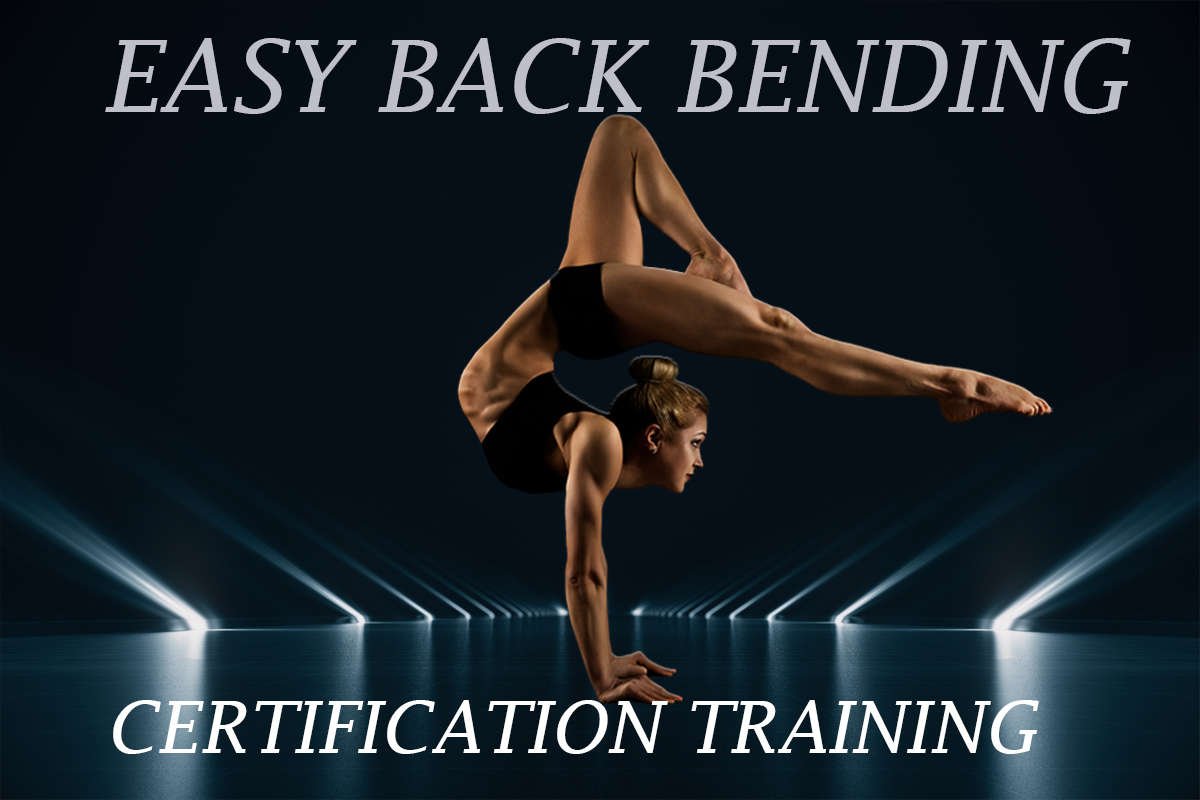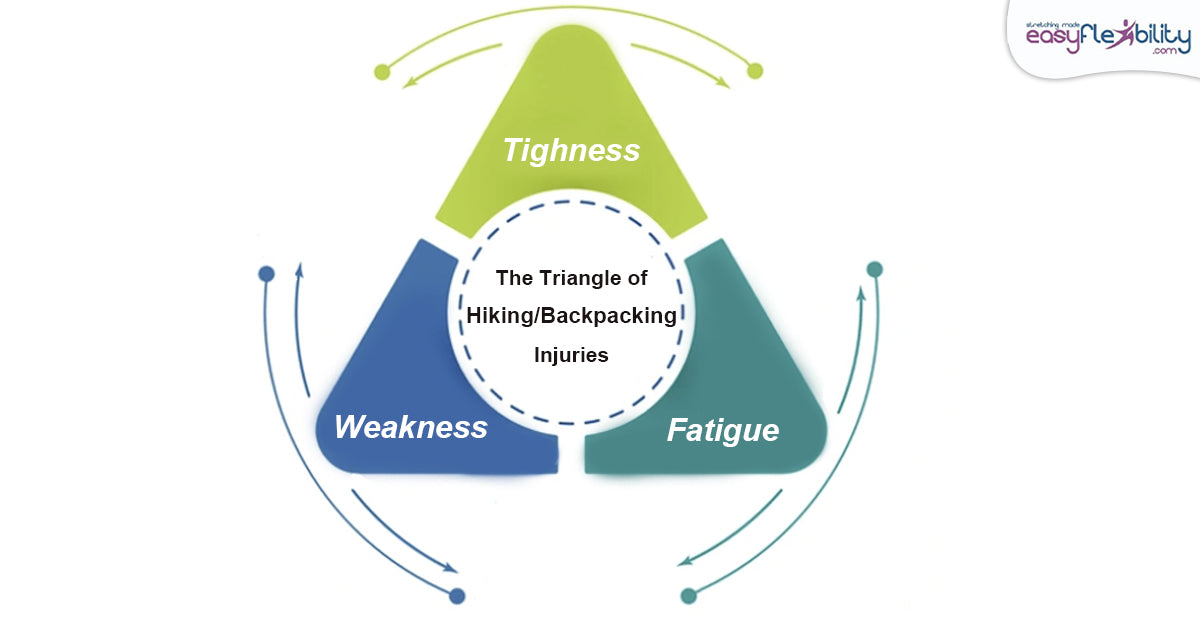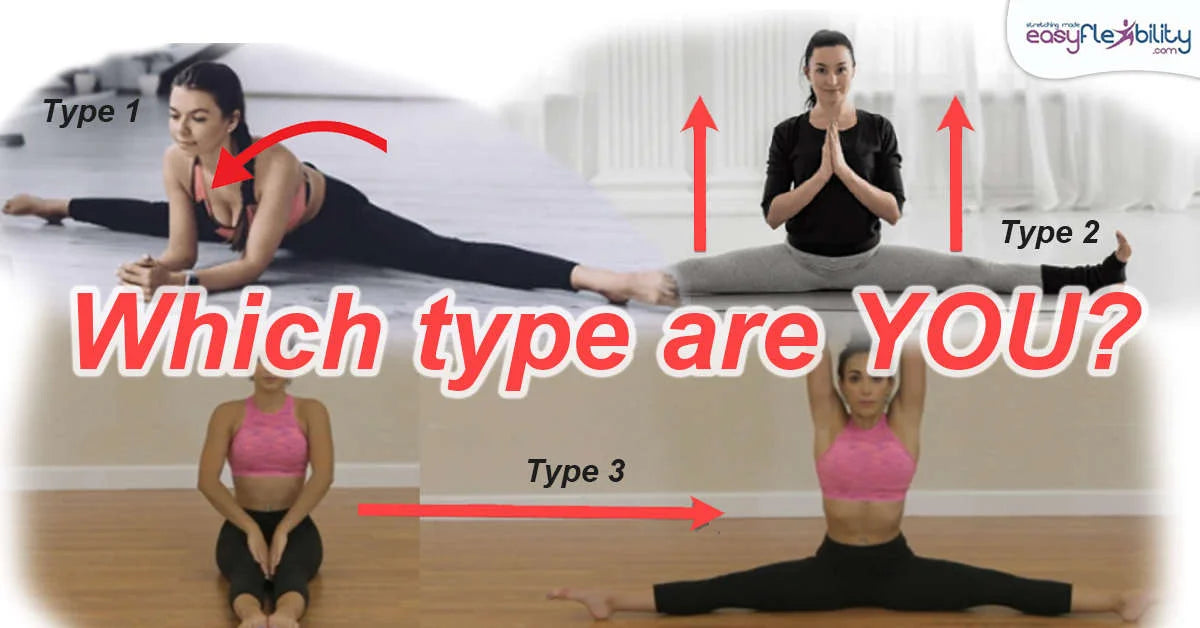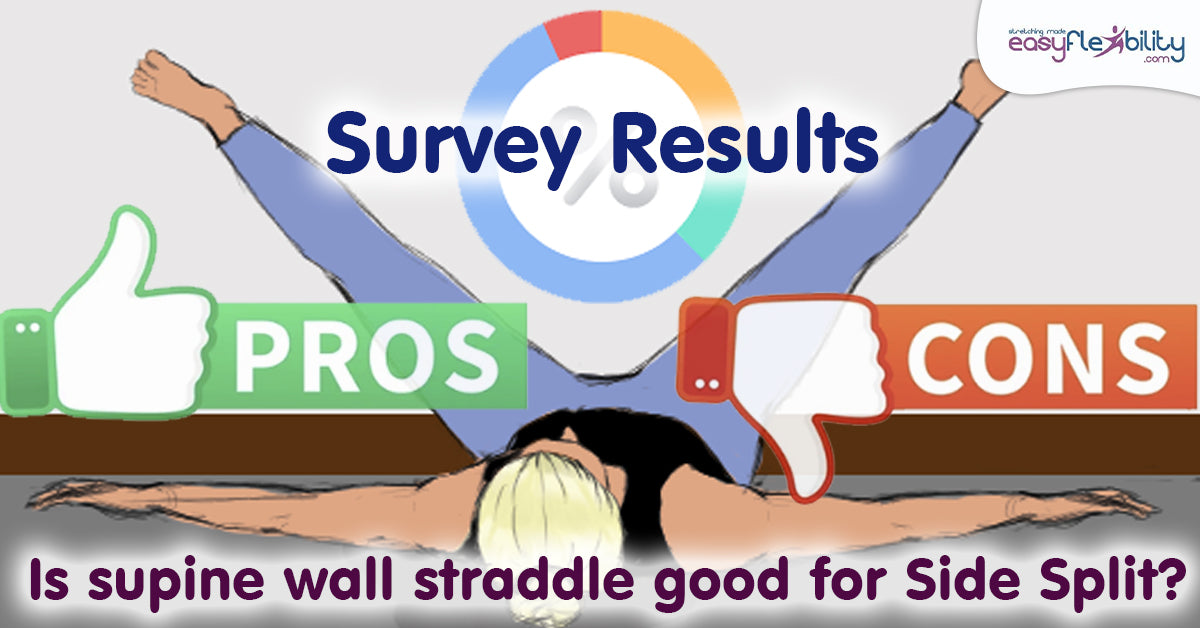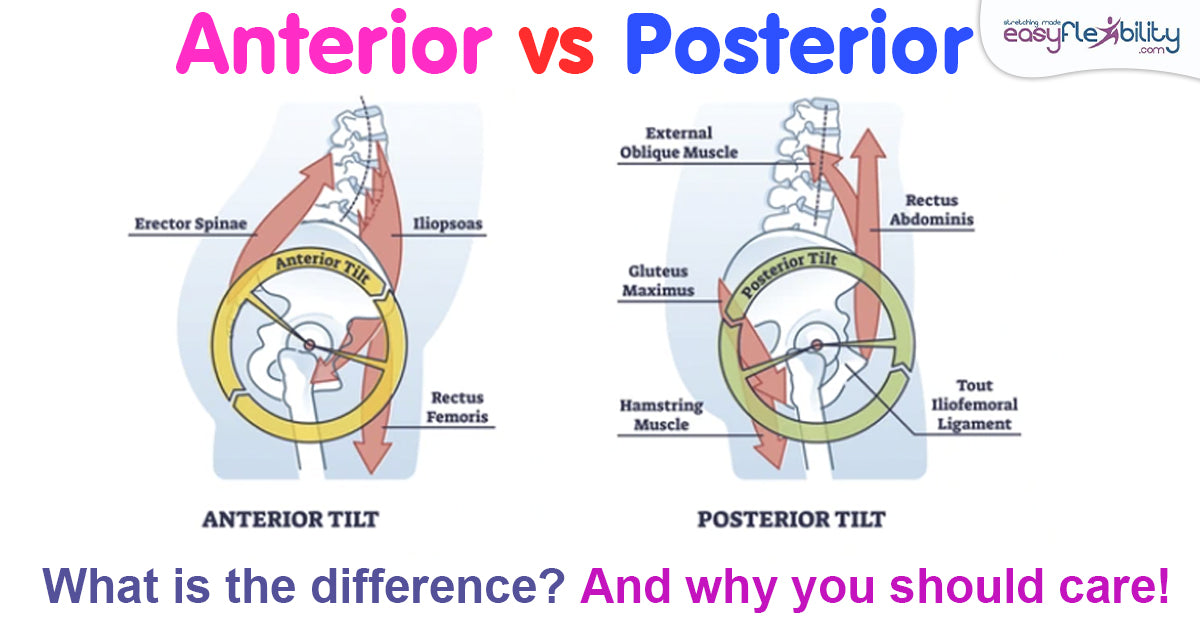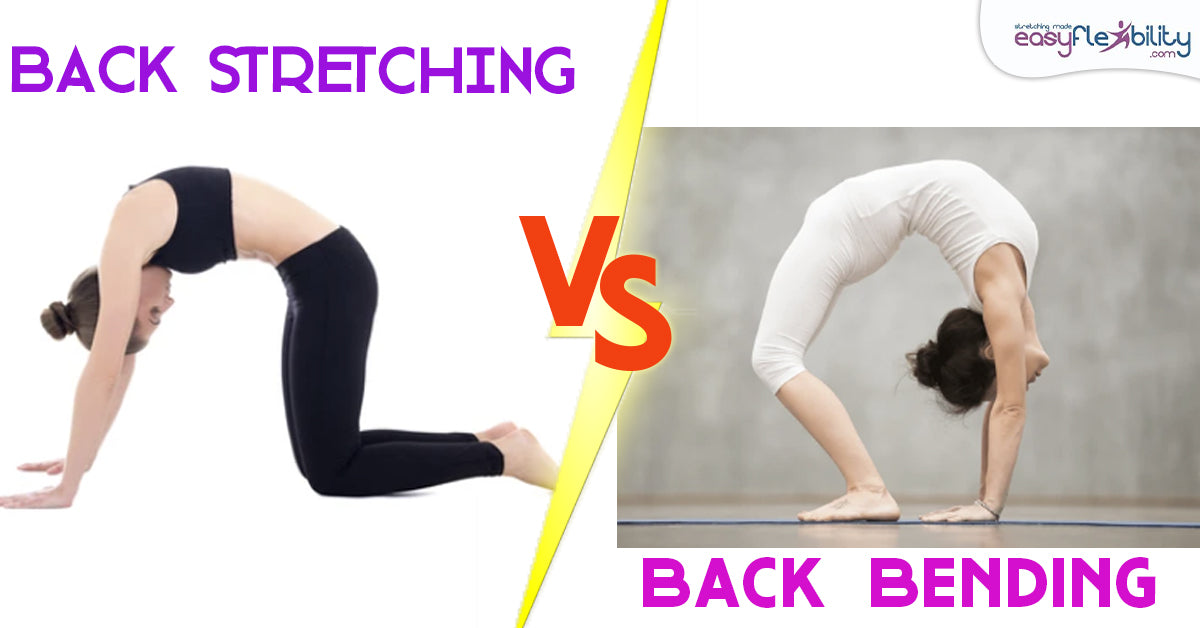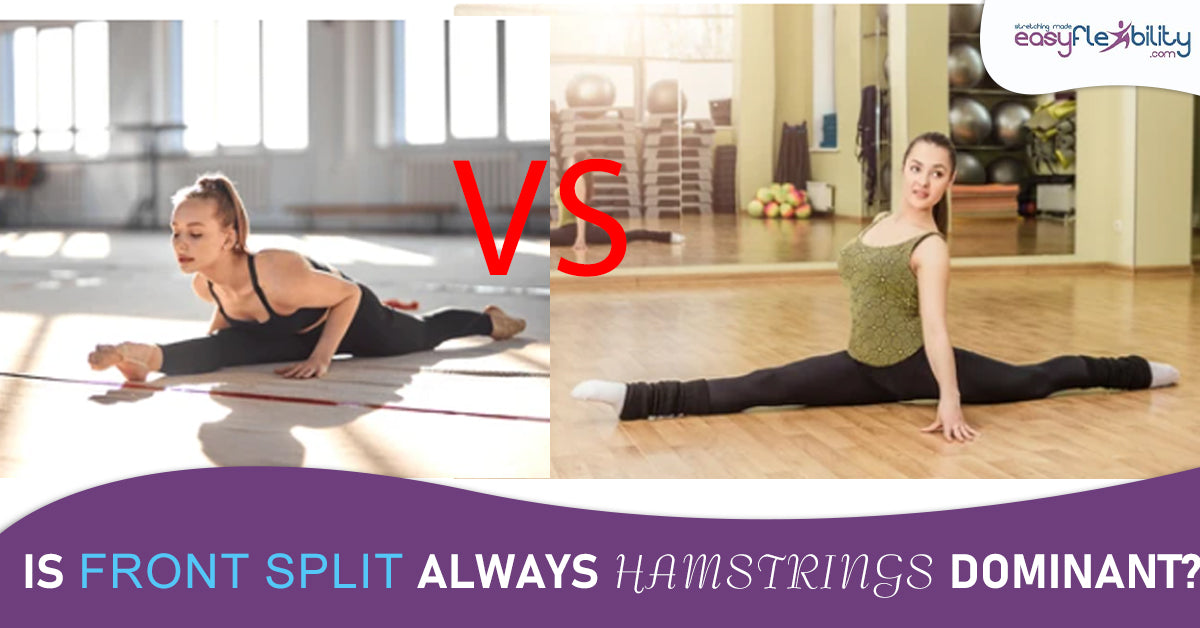Why stretching alone will not help you with thoracic hyperextension
Posted by Paul Zaichik on
Why stretching alone will not help you with thoracic hyperextension.
When I ask about the challenges of back extension flexibility one of the biggest issues that came up was thoracic hyperextension. Many people are able to hyperextend or bend back their spine at the lumbar or the lower back, but they are not able to do it higher than that.
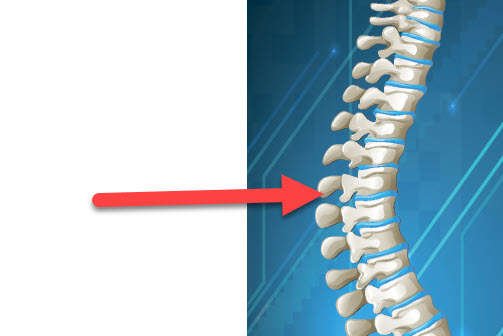
Some people believe it's because they're not stretching the right muscles, that is an incorrect assumption. The same muscles that flex the lumbar spine other muscles that flex your lumbar spine are the same muscles that flex your thoracic Spine.

If you compare two people one hyperextends primarily from the lower back, with a flat or even forward flexed thoracic spine, while the other one hyperextends from the lower back and the thoracic spine, there is no difference in abdominal flexibility. This is not because there is a difference in the flexibility of the muscles that flex the trunk and thus do not allow for extension of the trunk, that is not the case.
The body’s ability to hyperextend the back and where this type of extension will take place depends on strength, control and awareness, not on flexibility. There are people who have very deep backbends, they have very flexible muscles in front of their body, and yet, somebody with less flexibility and a lot less lower back hyperextension might be able to hyperextend their thoracic spine more than a very deep back bender.
If one tries to bend back without focusing on the thoracic spine specifically through combination of strength, control and awareness, the body will simply extend back at lower back. And, for most people the lower back is the most mobile joint. And thus, the body will keep stretching the more flexible connection and not do anything with the least flexible one. This is normal and happens not only in a back but in every other combination of joints.
Unlike the muscles in front of the body, the muscles in the back of the body that hyperextend the spine, do two different jobs. In other words, it is possible to isolate the extension of the spine by segments. And again, while there are many different bands of muscles running on both sides of the spine, in majority of the population, unless these muscles are especially trained and focused on, are pretty much in atrophy. So, it is no wonder that when someone tries to extend the spine the muscles that are the strongest would be the ones contracting not the ones that have wasted.
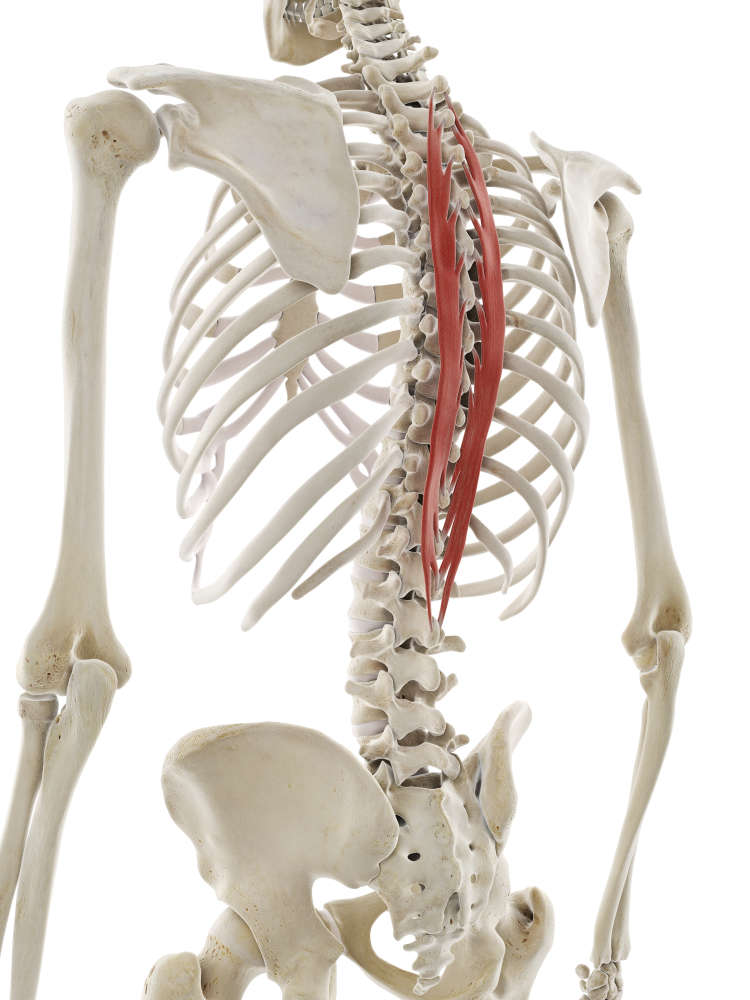
These muscles need to be built back up to allow thoracic spine hyperextension. This must be done through specialized exercises were the body is placed in the position where the extension can only come from the thoracic spine and not from the lumber spine. Of course the structure of the upper 12 back vertebrae are naturally less mobile in hyperextension than their lower counter parts. In EasyFlexibility system, this is done through supporting exercises.
In our EASY BACKBENDING Certification Seminar we go in depths into all these techniques. We focus on how to hyperextend the spine, protect the lower back by developing more flexibility in the hip flexors, and of course adductors which also flex the hip and help to build awareness in the thoracic spine, so that the whole back bend doesn’t simply collapse into the lower back. In many cases these muscles are so weak lift by themselves and they need assistance before they can get strong enough to do it.
In our EASY BACKBENDING Certification Seminar we go in depths into all these techniques. We focus on how to hyperextend the spine, protect the lower back by developing more flexibility in the hip flexors, and of course adductors which also flex the hip and help to build awareness in the thoracic spine, so that the whole back bend doesn’t simply collapse into the lower back. In many cases these muscles are so weak lift by themselves and they need assistance before they can get strong enough to do it.
SPECIAL INTRODUCTORY OFFER SAVE 50%!!! + GET 2 FREE PROGRAMS OF YOUR CHOICE!
The purpose of this course is to teach trainers, instructors, teachers and coaches a fast, safe, and proper Easy Back Bending training method of achieving and maintaining a Back Bend.
Back bending a beautiful and useful demonstration of flexibility of the interior structures of musculoskeletal apparatus. A safe, healthy, and well done back bend balances a culmination of elasticity of multiple structures, hip flexors, adductors, quadriceps and core muscles. The purpose of this course is to teach exactly this, how to develop flexibility in every muscle that resists back bending. Not just in a small group of muscles, but in each and every muscle group in the whole anterior chain.
A proper back band is a beautiful arch. It can be a King Cobra, it can be a Kapotasana, it can be a Bridge or a Bow, it can be combined with a handstand, it can be seen in a back handspring.

A lay person, when thinking of back bending, usually sees a picture of a contortionist pop up in their mind. Unfortunately, in many cases the "YouTube trained contortionists" are the worst offenders, no pun intended, they contort and distort the proper meaning of backbends.
Large number of contortionists out there simply fold their body in half, backwards. No flexibility at the hip joint, no flexibility at the thoracic spine, and extreme hyper flexibility in just a few joints of the lower back.
Interestingly enough majority of contortionist with deep backbends, or rather back folds, were trained as children where their ligaments were simply stretched and the stronger muscles such as hip flexors for example were almost not touched.
There are many back benders that do come from sports such as Rhythmic Gymnastics where as kids they did develop flexibility in their thoracic spine and in their hips, again sadly through forceful stretching.
Adult back benders on the other hand, stand very little chance of getting any flexibility from their hips or their thoracic spine if they are simply forced or assisted into a deep back bend. Because their thoracic spine has been stuck in a specific position for a long time, the hips go through the same fate, but with a combination of weak abdominal muscles that stretch easily and the most mobile joints of the lower back the whole back bend will take place in that area.
The purpose of this Easy Back Bending Certification Online Training Course is to teach how to avoid all of the issue mentioned above and how to properly distribute the back bend through using both strength, flexibility and awareness so that the back bending can be performed in a healthy manner and applied to various sports and skills.
In this EASY BACK BENDING course you will learn:

Anatomy & Kinesiology of Back Bending
In this section you will which muscles flex the spine, flex the hips and extend the knees. These 3 groups of muscles are the ones that restrict back bending. It’s very important to understand the function of each muscle, where it’s located and what it does, to be able to perform the ZST’s correctly and to understand the workings of other techniques such as Extended Length Conditioning, and other supporting exercises and how they related to maintenance of back bending flexibility, and utilization.
The Anatomy and Kinesiology is taught together with ZST’s since ZST’s give a deeper understanding of Kinesiology and understanding the Kinesiology in return gives a deeper insight into how ZST’s are derived and performed.
The Anatomy and Kinesiology is taught together with ZST’s since ZST’s give a deeper understanding of Kinesiology and understanding the Kinesiology in return gives a deeper insight into how ZST’s are derived and performed.
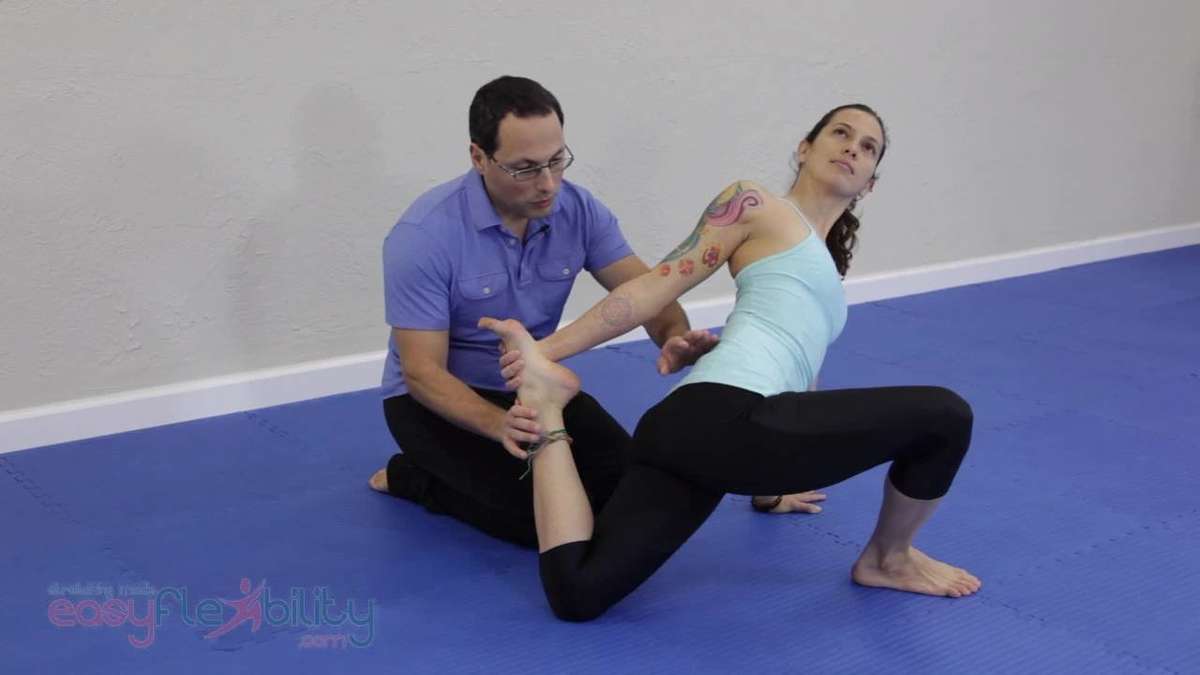
In depths look into ZST's for Back Bending
In this section Zaichik Stretching Techniques are revisited one more time. The reason for this is because quite a lot of people misunderstand the finer points of ZST’s and having a chance to look at ZST’s again in depth helps to make sure that the techniques are properly understood and performed.
In this section you will learn ZST’s for Rectus Abdominis, the Obliques, Psoas, Iliacus, Pectineus, Tensor Fascia Latte, Rectus Femoris, Sartorius, Gracilis, Adductor Magnus, Adductor Longus and Adductor Brevis.
Having flexibility in these muscles will allow you to take each joint through its full range of movement. The spinal joints will go through hyperextension, the hip joint will go through hyperextension and knee joint will go through flexion. This
back bending flexibility can then be applied to any back bending pose from King cobra to Kapotasana to Bow and so on.
Having flexibility in these muscles will allow you to take each joint through its full range of movement. The spinal joints will go through hyperextension, the hip joint will go through hyperextension and knee joint will go through flexion. This
back bending flexibility can then be applied to any back bending pose from King cobra to Kapotasana to Bow and so on.
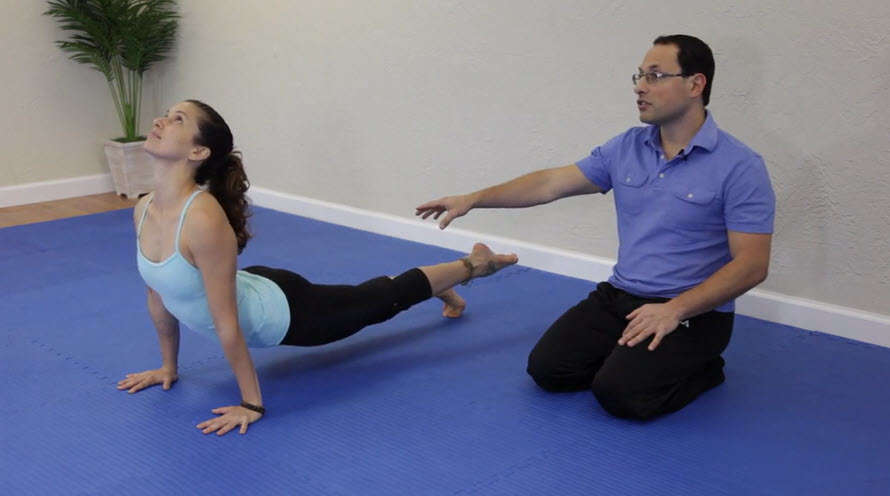
Extended Length Conditioning for Back Bending
In this section you will learn a specialized group of retention exercises called Extended Length Conditioning exercises. Extended Length Conditioning exercises allow the body to become comfortable in new ranges attained by Zaichik Stretching Techniques, so that the body can allow the progression deeper and deeper into flexibility as fast and as safe as possible.
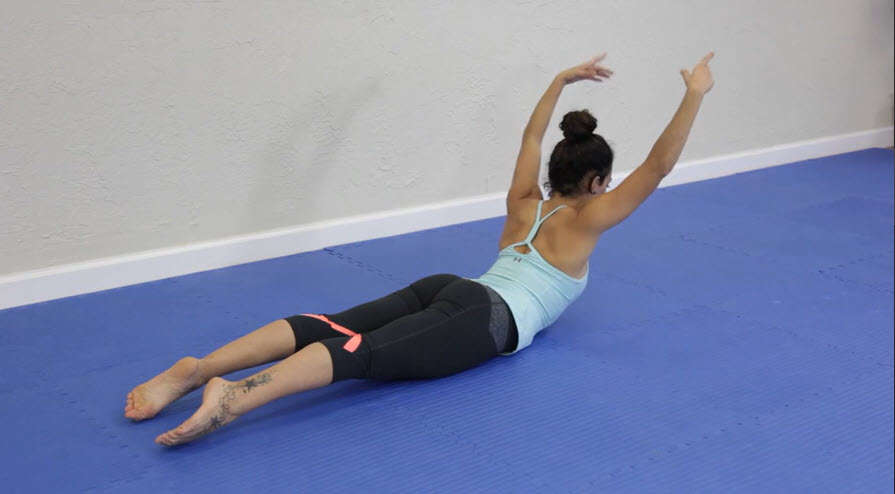
Reciprocal Inhibition for Back Bending
In this section you will learn specific Reciprocal Inhibition exercises for back bending. Reciprocal Inhibition is a natural concept in the body. The human neuromuscular system is designed in such a way that when muscles contracts, their antagonist muscles relax, this of course saves energy because two opposing muscles do not compete against each other.

Movement & Habituation for Back Bending
In this section you will learn the Movement & Habituation techniques for spinal and hip hyperextension. There are two ways for the body to become comfortable in and accept the new flexibility ranges as normal, one of course is strength and the other one is movement. Strength exercises are usually linear and are performed with applicable resistance. Movement and Habituation exercises can be linear but they can have multiple directions and they don’t necessarily have to have resistance, they simply move in a newly developed ranges to get the body accustomed to those ranges. This section presents the Movement and Habituation Techniques for Back Bending.
4 Full Sample Tested and Retested Routines for Each Level of Back Bending Flexibility
Beginner
Intermediate
Advanced
Very Advanced
Beginner
Intermediate
Advanced
Very Advanced
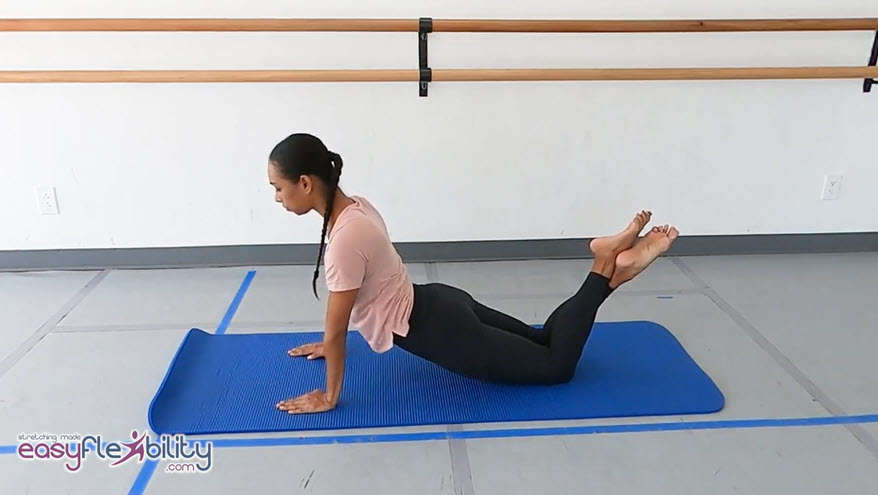
Beginner Routine for Back Bending
In this section you will learn a simple Beginner Back Bending routine. This routine has been tested for beginners, adjusted so that its suitable for a beginner student who is lacking strength or flexibility to do more advanced techniques. This is a foundation routine and based on this routine Intermediate, Advanced and Very Advanced routines are based. Here you will learn how to approach a student who does not have any experience in back bending or lacking a specific attribute such as strength, flexibility or awareness and needs to get initiated into back bending.

Intermediate Routine for Back Bending
In this section you will learn the Intermediate routine. The intermediate routine is for someone who has practiced the back bending for a while possibly by performing relaxed stretches or partner assisted stretches, possibly performing ZST’s and supporting exercises, but this is someone that has a little bit of experience with back bending and when you get a student like that you would use this routine. So in this section you will learn what an intermediate back bending lesson is.
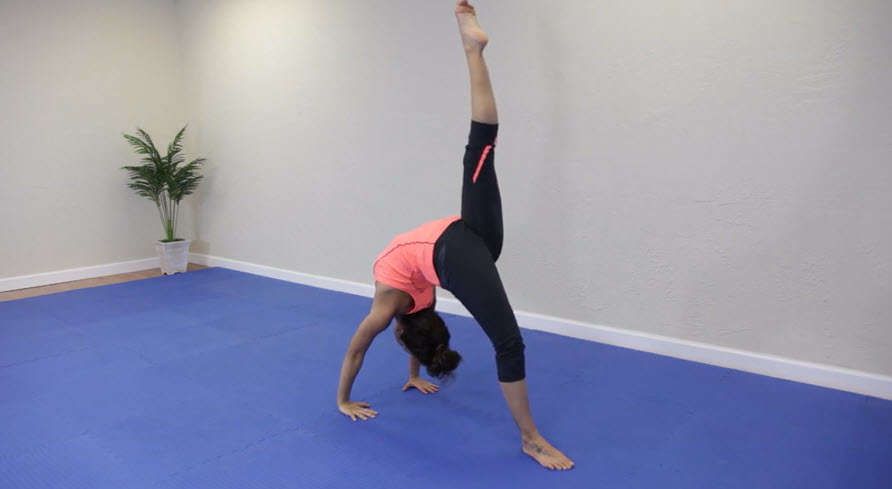
Advanced Routine for Back Bending
Here you learn Advanced back bending routine. It is a sample routine for people that have been practicing for a while and have good understanding of which muscles need to relax and which muscles need to contract and looking to go deeper into back bending. The advanced routine contains modalities incorporated into ZST’s thus allowing deeper stretches in the ZST’s, this is something that is not recommended to start with but rather for students that have an already good experience with the Zaichik Stretching Methodology.
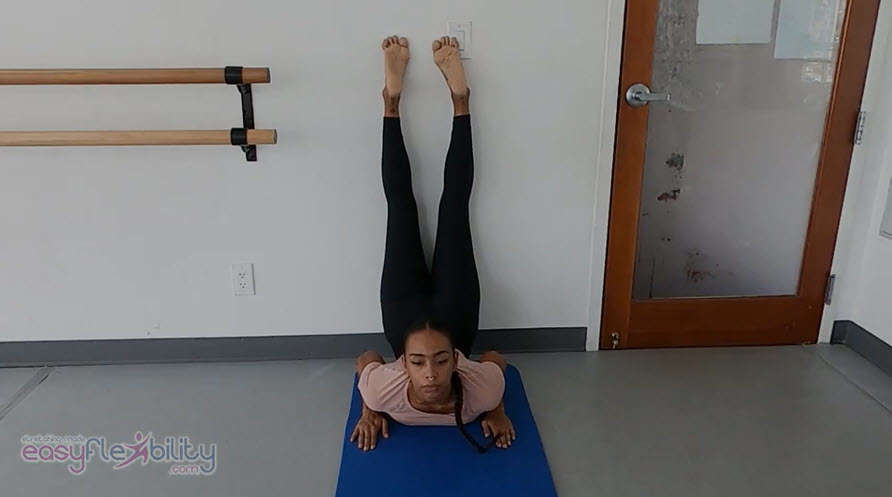
Very Advanced Routine for Back Bending
When you learn Very Advanced routine you will also use ZST’s with modalities, however the supporting exercises are going to change allowing the body to maintain deeper flexibility, thus allowing a student to continue advancement in their back bending training. Each of the routines you will learn demonstrates two rounds, there is an increase of difficulty
from round 1 to round 2 in each routine, so effectively there are 8 levels demonstrated in all 4 full routines.
from round 1 to round 2 in each routine, so effectively there are 8 levels demonstrated in all 4 full routines.
Once you learn these 4 routines with experience you will be able to come up with your own routines and at the same time you will be able to apply any one of these routines to your students at their appropriate level and take them up the levels as they become stronger and more flexible.
This certification course will allow you to teach proper Back Bending development in the following setting:
Private one-on-one online sessions
Private one-on-one in studio sessions
Back Bending specific group classes
Back Bending Specific online classes
Splicing the material into general classes
This EASY BACK BENDING CERTIFICATION course consists of 10 Categories with 111 video segment lessons.
A follow along experience and easy navigation through the wealth of information so that you can learn, understand and be able to practice and/or teach back bending!
A follow along experience and easy navigation through the wealth of information so that you can learn, understand and be able to practice and/or teach back bending!
This Course Contains:
- Introduction to Back Bending
- In depths look into ZST's for Back Bending
- Anatomy & Kinesiology of Back Bending
- Antagonist Short Range Conditioning
- Movement and Habituation
- Extended Length Conditioning
- Reciprocal Inhibition
- Beginner Level
- Intermediate Level
- Advanced Level
- Very Advanced Level
- Certification Assessment Test


This is what's included:
Gain access to a full and detailed Kinesiological explanation for every muscle in the human body responsible for Back Bending. All of our Zaichik Stretching techniques are specific to individual muscles, focusing on their primary actions.
We bring you the most complete seminar for Back Bending Mastery.
- Detailed demonstration and explanation of each Zaichik Stretching Technique: Paul Zaichik will show all techniques on himself and his students for a simple structured layout of the content of the program. This will help you gain the necessary insight into each Zaichik Stretching exercise and the best way it’s done. An added benefit is the information given on the reasons behind every move, and best examples of performing it.
- Detailed demonstration of Movement and Habituation, Extended Length Conditioning, Antagonist Short Range Conditioning and Reciprocal Inhibition.
- Detailed demonstration of each routine: Beginner, Intermediate, Advanced and Very Advanced.
- A multiple choice questions test to assure your understanding of the material presented
- CERTIFICATION to be able to teach all the information learnt to your students.
- 2 FREE PROGRAMS of your choice: Your choice of two digital videos is an added bonus to obtaining this certification. It allows for a better idea of how Zaichik Stretching techniques are combined to form specific routines.
- Access to a Private Support Forum: Believe it or not – this is one of the most important elements of a program as it forms the right attitude towards the program. Upon registration for the course you gain an access to the private support forum, where you have a 24-hour active community to share your experience with, ask questions and seek advice.
Now that you know about the Zaichik Stretching Method, are you going to keep wasting time and money, risking your health, hitting plateaus, wondering how to reach your goal instead or working towards it? Or are you going to start your EasyFlexibility Training Program and get amazing back bends and awesome flexibility sooner than you expect?
Click on the BUY NOW BUTTON below to get started!
Please note: that these are not downloadable programs, nor are these programs available in DVD format. All our programs are Pre Recorded Online On Demand Video Strength & Flexibility Training Programs. Once you place your order, you will receive an email containing your login information on how to login to your very own online library which will contain all the programs that you purchase from us. This is an online library, which you can access any time that you wish from any device, phone, computer, ipad. There is no time limit for you to view your programs, you get to keep them in your library indefinitely, and access them any time, anywhere, and for as long as you want to!
Don’t see what you want? Need help selecting a program? Want to buy more than one program? We can put together a one step checkout for you with all the programs that you wish to buy so you don't need to keep clicking the buy now button over and over again and can checkout one time with all the programs you need.
We’re here for you! Just send us an email to info@easyflexibility.com describing your goals and we will help select the right program for you!
We’re here for you! Just send us an email to info@easyflexibility.com describing your goals and we will help select the right program for you!

© ElasticSteel Corp., EasyFlexibility, Paul Zaichik, et. El., 2022. No part of the materials available through ElasticSteel.com, EasyFlexiiblity.com, site may be copied, photocopied, reproduced, translated or reduced to any electronic medium or machine-readable form, in whole or in part, without prior written consent of Paul Zaichik EasyFlexibility.com, Elasticsteel.com.. Any other reproduction in any form without the permission of Paul Zaichik EasyFlexibility.com, Elasticsteel.com is prohibited. All materials contained on this site are protected by United States copyright law and may not be reproduced, distributed, transmitted, displayed, published or broadcast without the prior written permission of Paul Zaichik, EasyFlexibility.com, Elasticsteel.com.
Share this post
0 comment

